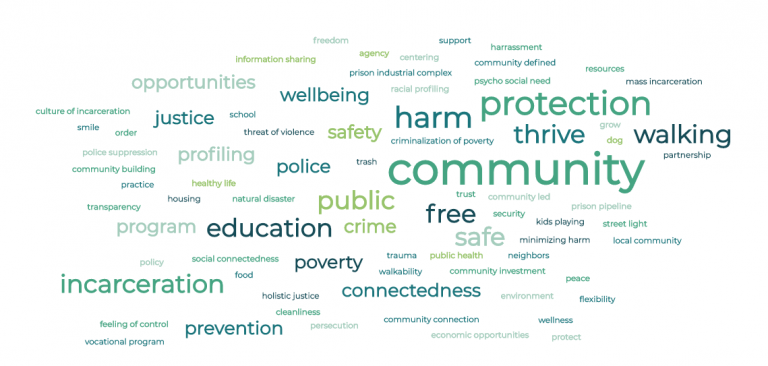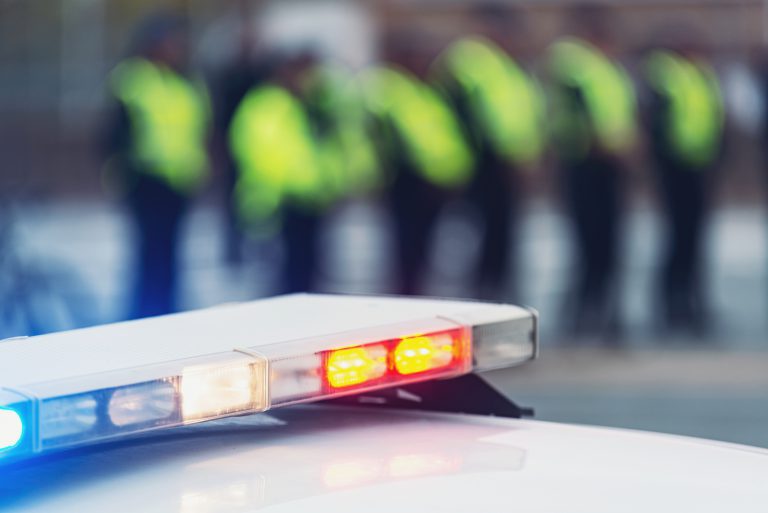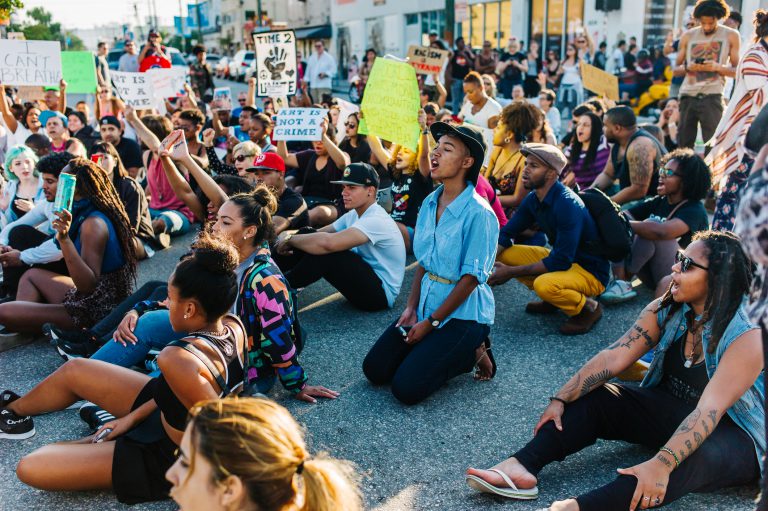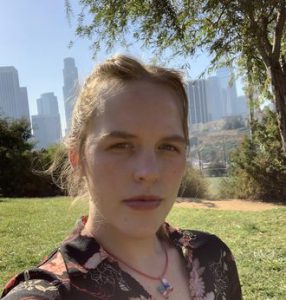Public Safety as a Matter of Public Health
This story was created as a part of the NDSC Criminal Justice Data Initiative. In the spring of 2019, the USC Price Center partnered with Microsoft and the USC Safe Communities Institute to launch the NDSC Criminal Justice Data Initiative, a pilot project to collect, aggregate, and disseminate additional public safety indicators on the NDSC platform, including arrests, stops by police, and calls for service from community members. These indicators were determined through engaging with law enforcement agencies, community residents, and local non-profits on their data needs and definitions of public safety. Read the full report here.
Public safety is a vital component of a healthy environment that allows a community to thrive. Studies have shown that perceptions of public safety have far-reaching impacts on community health through their influence on the physical and mental well-being of residents, their social behaviors, and feelings of community cohesion. In other words, a safe community is a healthy community.
Over the last decade, the widespread availability of camera phones and movements such as #BlackLivesMatter–which began in 2013–have elevated issues of violence and racial discrimination at the hands of law enforcement. These factors have influenced the conversation on public safety by highlighting how the very institutions mandated to uphold public safety often leave certain communities feeling less safe and erode public perceptions of safety in the process.
Defining Public Safety
To better understand how different people and professions conceive of public safety, the USC Price Center hosted a series of listening sessions with law enforcement, community-based organizations, researchers, and community members. The figure below shows their answers in word cloud format.

Definitions from law enforcement officers shared common themes, including: protection from harm, teamwork, and transparency. In contrast, definitions from local government and nonprofit representatives focused more on topics like health and wellbeing, community investment, economic opportunity, and the built environment. Lastly, South Los Angeles residents reflected on their communal experience with police and the criminal justice system and shared themes such as the criminalization of poverty, racial profiling, and the desire for investments in community programs rather than police. The varied definitions provided by different participants underscore the many factors that influence people’s conceptions of public safety. While definitions of public safety differed largely amongst groups, all agreed that public safety includes intangible elements such as community belonging, connectedness, and opportunities to thrive and be free.
Geographic Disparities in Police Stops
Studies have shown that marginalized populations are unequally affected by law enforcement patrolling and police contact. Data analyzed through the NDSC Criminal Justice Data Initiative provides evidence of the disproportionate impacts of LAPD’s policing on communities of color, especially in South Los Angeles.
South Los Angeles is home to just over 777,000 people. A historically Black neighborhood, today, 28% of the population identifies as Black and 66% of the population identifies as Latino according to 2018 American Community Survey estimates. These percentages are much greater than overall LA County averages, where 8% of the population identifies as Black and 48% identify as Latino. Further, the history of South Los Angeles, which includes significant community uprisings in protest of police mistreatment in the 1960s and 1990s, has informed community attitudes towards law enforcement. These longstanding tense relations between residents and the LAPD inform the perspectives of respondents from South LA, who emphasized the harmful psychological impacts of the criminalization of poverty and racial profiling, and the need for investments in alternative programs to increase neighborhood safety during listening sessions.
Our analysis found that vehicle and pedestrian stop rates by the police are much higher in South Los Angeles when compared to the rest of the city. As depicted in the graph below, there were steady declines in police stops for both South LA and the rest of the city up until 2015. After 2015, there was a sharp increase in stops in South LA, while the rates remained fairly steady across the rest of the city.
While residents in South Los Angeles have higher rates of stops than other parts of the city, people of color across all neighborhoods – especially people who identify as Black – are stopped at higher rates by the police than other groups. Across the city, Black Angelenos are stopped and arrested three times as often as their White and Latino counterparts. The chart on the left shows stop and arrest rates by race/ethnicity, averaging data from years 2011 to 2018 and accounting for the relative size of each racial/ethnic group.
Public Safety as a Social Determinant of Health
Racial and place-based disparities in policing not only affect communities’ perceptions of public safety, but also play a significant role in their overall health and well-being. There is growing evidence that high-profile incidents of police violence as well as racial profiling have negative consequences on the physical and mental health of Black people and on Black communities.

Several studies have shown how inappropriate stops by law enforcement and racial profiling are linked to adverse mental health outcomes, including anxiety, depression, and PTSD. Moreover, studies on neighborhood-level frisks and use of force have similarly found that those policing strategies lead to elevated levels of distress among men living in those neighborhoods. This is troublesome given the affects stress has on health. Feelings of fear, anxiety, anger, etc. produce cardiovascular, neurological and other bodily responses that put strain on body organs, negatively affecting health and increasing mortality.
In addition to the negative impacts it produces, racial profiling by law enforcement can also affect individuals’ and communities’ ability to achieve positive physical health outcomes. One study found that in neighborhoods of color where law enforcement used high rates of force, there was increased risk for diabetes and obesity among community members. This study also found that for people of color, living in majority-white neighborhoods with large racial gaps in police tactics was strongly associated with high blood pressure, diabetes and obesity.
As these studies suggest, racial profiling by police and unequal law enforcement tactics have large impacts for public health. It can not only directly cause death and injury, but also has emotional and physiological ripple effects on individuals and communities that can lead to adverse health outcomes.
Given this reality, there are a number of political efforts underway to reimagine community public safety. Re-Imagine L.A, a coalition of advocates and community organizations, have placed a ballot initiative called Measure J on the November 2020 ballot that would designate a portion of the LA County budget to be used for alternatives to policing and incarceration. If passed, Measure J would amend the county’s charter to require at least 10% of locally-controlled revenues to be spent on community investment such as mental health services, youth development programs, and affordable housing.


Mackenzie Goldberg
Mackenzie Goldberg is a Master of Urban Planning student at USC Price. She holds a bachelor’s degree in Religious Studies from Reed College in Portland, OR. Prior to coming to USC, Mackenzie worked as a writer and editor for an architectural publication based in Los Angeles, CA, where she came to understand the many ways in which policy undergirds our built environment. Her research interests lie at the cross-sector of planning policy, urban design, and community organizing. Through her work, she hopes to better engage communities in the systems that govern our cities.
Sources
Slone, L. (2020, January 19). Increasing Neighborhood Safety. Let’s Get Healthy California. https://letsgethealthy.ca.gov/goals/creating-healthy-communities/increasing-neighborhood-safety/
Addressing Law Enforcement Violence as a Public Health Issue. (2019, January 29). https://www.apha.org/policies-and-advocacy/public-health-policy-statements/policy-database/2019/01/29/law-enforcement-violence
DeVylder J, Oh HY, Nam B, Sharpe TL, Lehmann M, Link BG. Prevalence, demographic variation and psychological correlates of exposure to police victimisation in four US cities. Epidemiol Psychiatr Sci. 2017;26:466–477.
Sewell AA, Jefferson K, Lee H. Living under surveillance: gender, psychological distress, and stop-question-and-frisk policing in New York City. Soc Sci Med. 2016;159:1–13.
Duru OK, Harawa NT, Kermah D, Norris KC. Allostatic load burden and racial disparities in mortality. J Natl Med Assoc. 2012;104(1-2):89-95. doi:10.1016/s0027-9684(15)30120-6
Sewell AA. The illness associations of police violence: differential relationships by ethnoracial composition. Available at: https://onlinelibrary.wiley.com/doi/full/10.1111/socf.12361. Accessed January 18, 2019.
Photo Attributions
Cover Photo: Photo courtesy of Istock/anouchka
Photo 1: Photo courtesy of Istock/shaunl
Photo 2: Photo courtesy of Istock/StreetMuse

